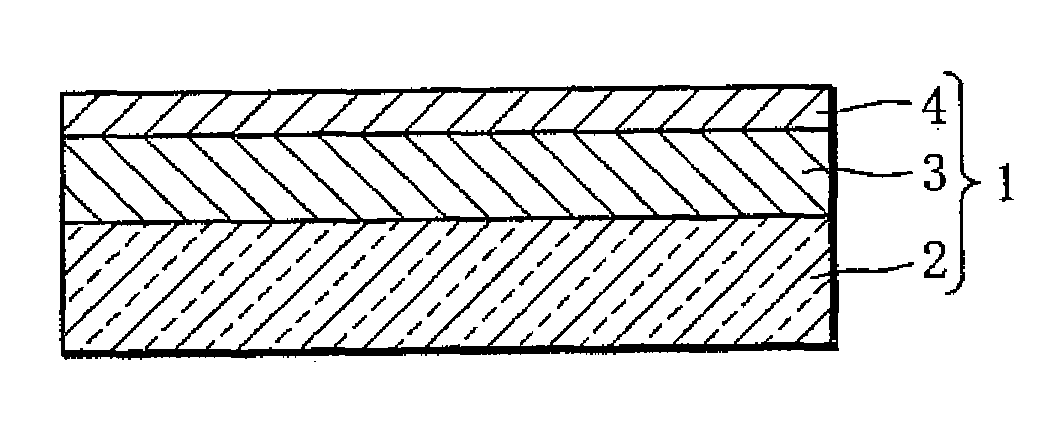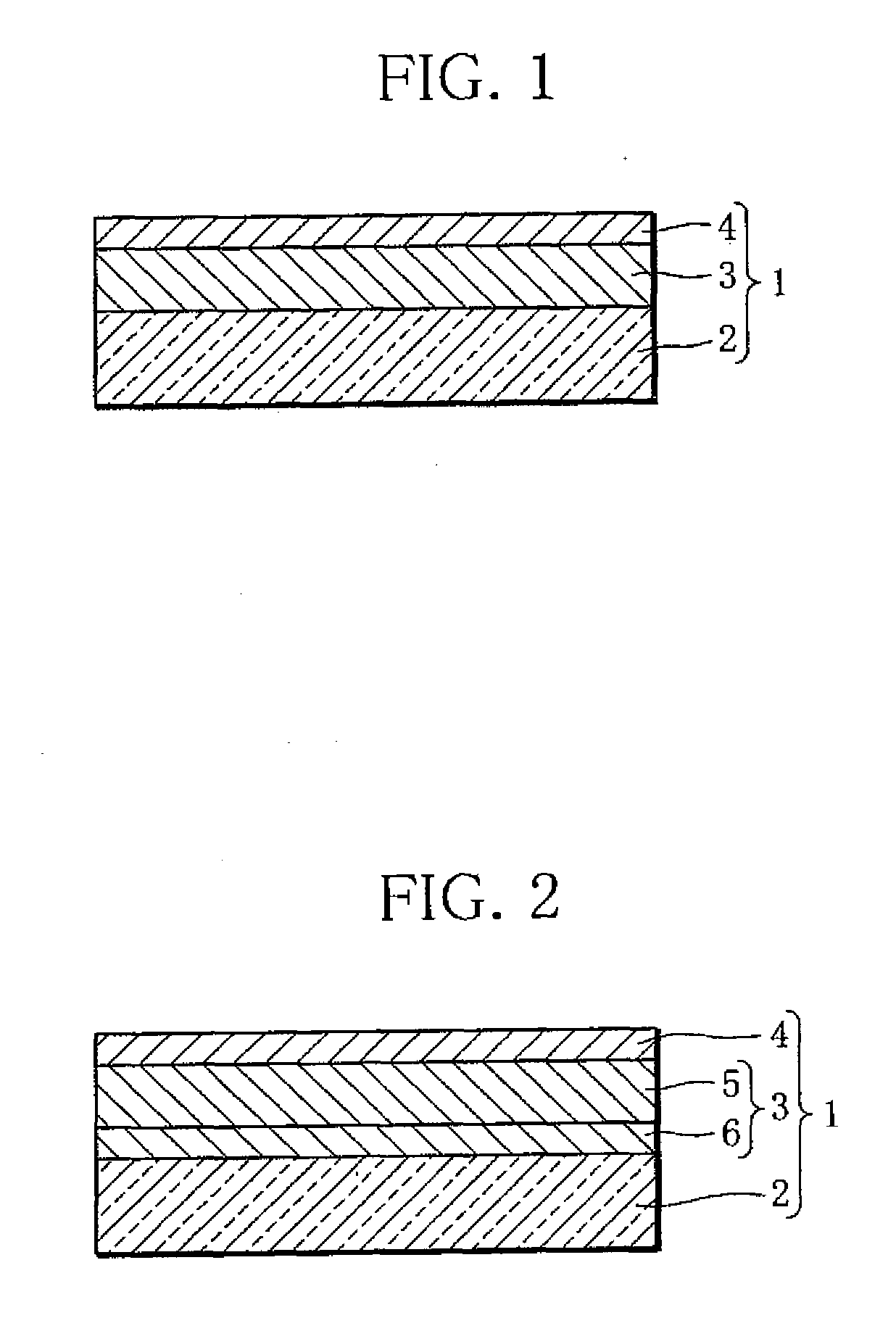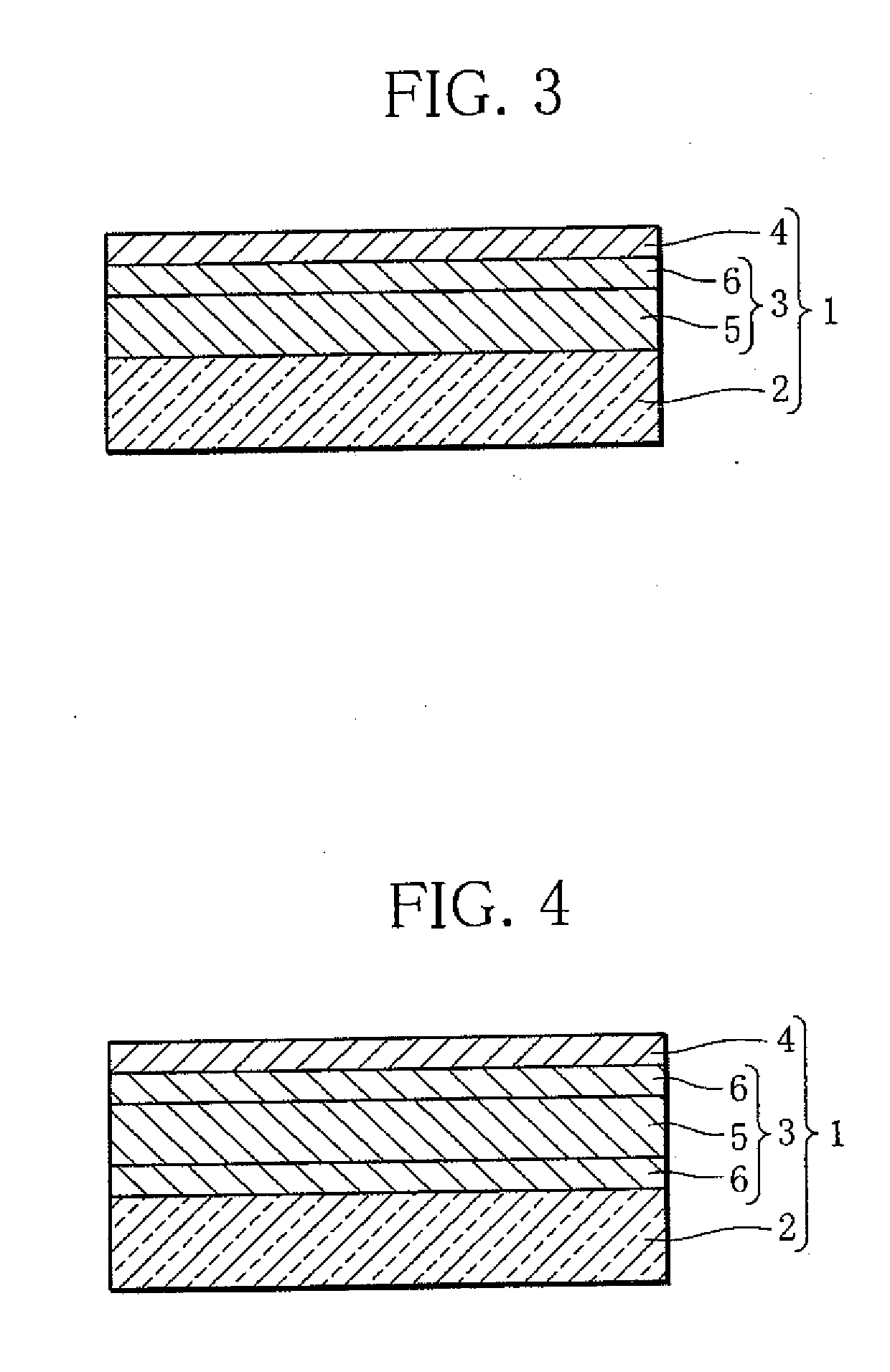Hydrogen-absorbing alloy and hydrogen sensor using the alloy
a hydrogen sensor and alloy technology, applied in the field of hydrogen-absorbing alloys, can solve the problems of shortening the time required, and achieve the effects of speeding up dehydrogenation, speeding up dehydrogenation, and expediting dehydrogenation
- Summary
- Abstract
- Description
- Claims
- Application Information
AI Technical Summary
Benefits of technology
Problems solved by technology
Method used
Image
Examples
Embodiment Construction
[0031]As illustrated in FIG. 1, a hydrogen sensor 1 according to the present invention includes a substrate 2, a hydrogen reaction layer 3, and a first catalyst layer 4.
[0032]The substrate 2 is a transparent plate member such as an acrylic plate, a plastic plate, a transparent sheet, or a glass plate.
[0033]The hydrogen reaction layer 3 contains an Mg—Ni-based alloy as well as a Zr—Ti-based alloy. An Mg—Ni-based alloy is a material capable of absorbing and desorbing hydrogen and switchable between a transparent state and a mirror state (metallic state) or an intermediate state. Instead of the Mg—Ni-based alloy, a thin film of a rare earth element such as yttrium, lanthanum or the like, a thin film of a rare earth metal-magnesium alloy, a thin film of a magnesium-transition metal alloy, or a thin film of magnesium may be used. The Mg—Ni-based alloy is especially preferable because of its low material cost and excellent optical characteristics. The hydrogen reaction layer 3 is deposite...
PUM
| Property | Measurement | Unit |
|---|---|---|
| flow rate | aaaaa | aaaaa |
| thickness | aaaaa | aaaaa |
| thickness | aaaaa | aaaaa |
Abstract
Description
Claims
Application Information
 Login to View More
Login to View More - R&D
- Intellectual Property
- Life Sciences
- Materials
- Tech Scout
- Unparalleled Data Quality
- Higher Quality Content
- 60% Fewer Hallucinations
Browse by: Latest US Patents, China's latest patents, Technical Efficacy Thesaurus, Application Domain, Technology Topic, Popular Technical Reports.
© 2025 PatSnap. All rights reserved.Legal|Privacy policy|Modern Slavery Act Transparency Statement|Sitemap|About US| Contact US: help@patsnap.com



